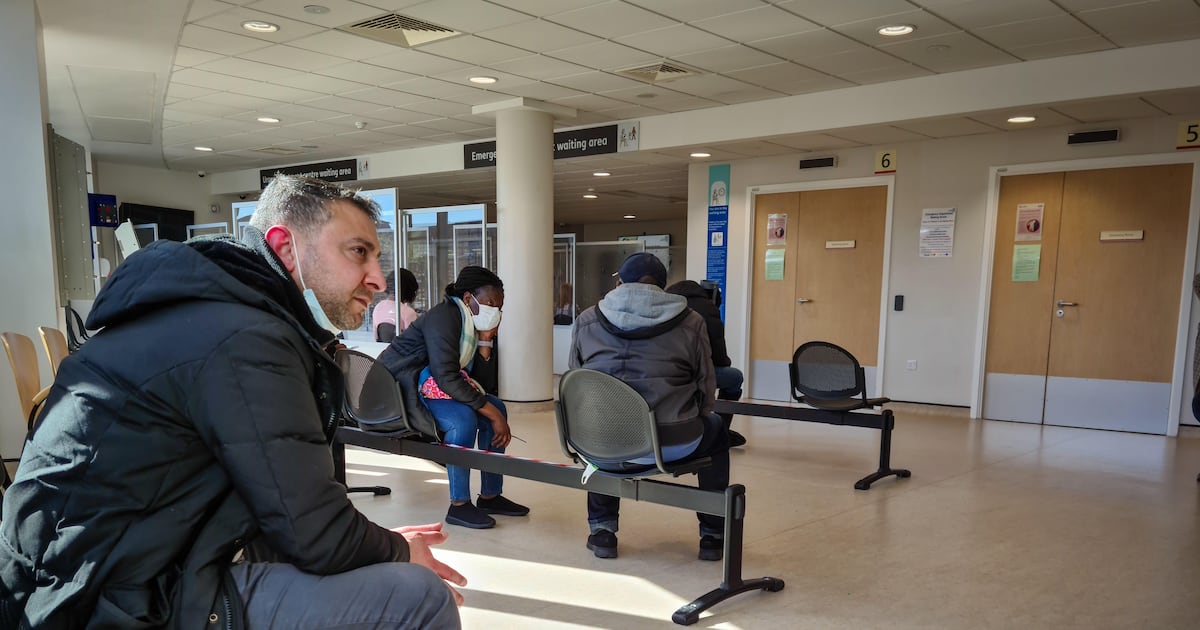More than 1,000 patients have waited more than two days for a bed in Northern Ireland’s “beyond disastrous” emergency departments this year.
Responding to the latest waiting times released by the Department of Health for January to March this year, the figures were highlighted by the Royal College of Emergency Medicine.
The RCEM added that in January alone, 301 patients waited more than three days to be admitted to a ward bed.
The figures also showed:
- The second worst three months on record for four-hour performance, with only one third (34.2%) of patients treated, admitted or discharged within four hours – well below the target of 95%.
- Those waiting 12 hours or more in a Type 1 ED in the last quarter was 32,314, triple the same quarter in 2019 (10,111).
The RCEM also said the data showed a year on year rise in the number of people attending the ED for the second time in March for their original issue.
Those leaving the department without being seen at all also remains high at 7.3% this quarter.
Along with data from the last quarter of 2024, the RCEM said the latest figures revealed the scale of the “crisis.”
More than a thousand people so far this year have been stranded for two days or more in Northern Ireland’s Emergency Departments while waiting for a bed to be found for them – a situation the Royal College of Emergency Medicine has described ‘beyond disastrous’.
Read our full…
— Royal College of Emergency Medicine (@RCollEM) April 24, 2025
To this end, the Northern Ireland Executive has already started planning for next winter by holding meetings with health officials, including those from the RCEM.
Dr Michael Perry, Vice Chair of RCEM Northern Ireland said: “In the lead up to winter, we cautioned that our Emergency Departments were on track for another disastrous winter.
“And unfortunately, our predications came to fruition – but it was beyond disastrous.
“You simply have to look at today’s data for a glimpse into the sheer scale of challenges that Emergency Departments are facing. And of course, they aren’t just numbers and statistics, these are people.”
He added: “Loved family members who were forced to spend dangerously long waits – for many, days – in our EDs, often on trolleys in corridors, because there were no available beds on wards for them to move to.
“And behind every patient, is a team of Emergency Department clinicians who are running on fumes and frustration, trying to care for the most vulnerable people in conditions that are unacceptable.”
The Department is reminding the public that timely discharge from hospital is better for patients and can help deliver hospital care to those who need it most.
It can also help reduce pressures on health services during busy periods. @HSC_NI
➡️More: https://t.co/lzHJn0t6Rp pic.twitter.com/zpsinPeP6Q
— Department of Health (@healthdpt) April 25, 2025
While pleased the Executive was already engaged with “The Big Discussion” on winter preparations, he said this must “translate into tangible, actionable plans” to prevent another annual crisis.
On Thursday, the BMA also voiced their concern over the “intolerable pressure” facing staff and patients and called for a “concerted effort” from the Department of Health to support staff and prepare for the winter.
Earlier this week, another symptom of the pressures facing emergency departments was highlighted – patients who end up being treated in hospital corridors.
From June, corridor care numbers will be officially recorded in the hope it will give a more complete picture of hospital capacity.
Full coverage, half price. For expert insights, analysis and commentary, subscribe to The Irish News today. Get full access for just £7.49/month. Offer ends 28th April.


